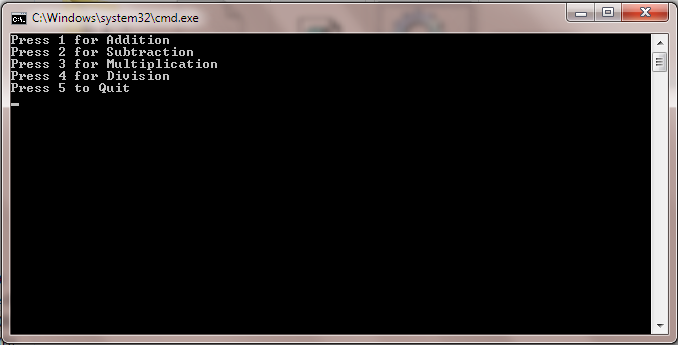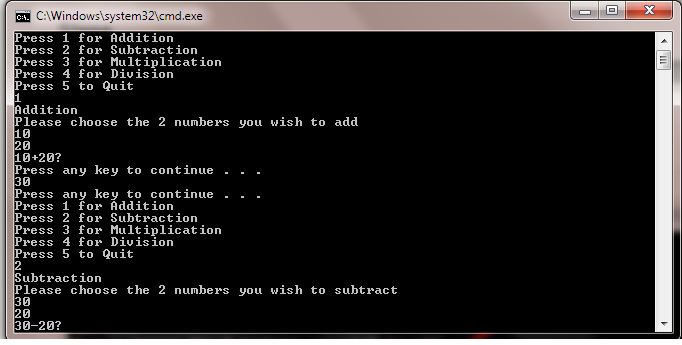STEP 1:
Open notepad by going to Start> All Programs > Accessories> Notepad.
STEP2:
Copy the following code:
- @echo off
- :start
- Echo Press 1 for Addition
- echo Press 2 for Subtraction
- echo Press 3 for Multiplication
- echo Press 4 for Division
- echo Press 5 to Quit
- set /p type=
- if %type%==1 goto a
- if %type%==2 goto b
- if %type%==3 goto c
- if %type%==4 goto d
- if %type%==5 goto e
- :a
- echo Addition
- echo Please choose the 2 numbers you wish to add
- set /p num1=
- set /p num2=
- echo %num1%+%num2%?
- pause
- set /a Answer=%num1%+%num2%
- echo %Answer%
- pause
- goto start
- :b
- echo Subtraction
- echo Please choose the 2 numbers you wish to subtract
- set /p num1=
- set /p num2=
- echo %num1%-%num2%?
- pause
- set /a Answer=%num1%-%num2%
- echo %Answer%
- pause
- goto start
- :c
- echo Multiplication
- echo Please choose the 2 numbers you wish to multiply
- set /p num1=
- set /p num2=
- echo %num1%*%num2%?
- pause
- set /a Answer=%num1%*%num2%
- echo %Answer%
- pause
- goto start
- :d
- echo Division
- echo Please choose the 2 numbers you wish to divide
- set /p num1=
- set /p num2=
- echo %num1%/%num2%?
- pause
- set /a Answer=%num1%/%num2%
- echo %Answer%
- pause
- goto start
- :e
- echo. Done!
STEP 3:
Go to File> Save As
- Change the "Save as type" box to "All Files"
- Type "anything.bat" into file name and click "Save"
STEP 4.
Double click on the file and you will get this window:
STEP 5:
Follow the simple instructions and your answer will be displayed



